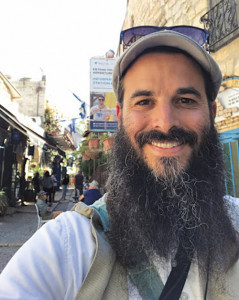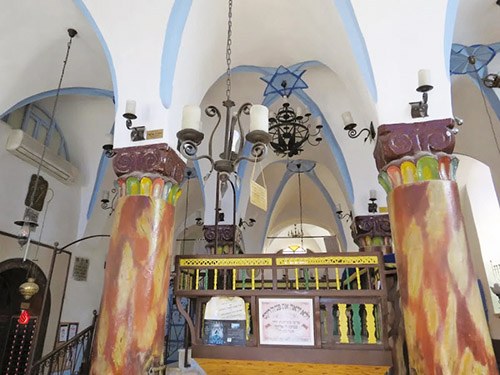
According to archaeologists, the Jewish history of Tzfat dates back over 2,000 years. And according to archaeologists, Tzfat is the only location in Israel that has had an almost uninterrupted Jewish presence since the time of the Maccabees. Some of the most illustrious scholars of Jewish history have been residents of Tzfat.
Additionally, Tzfat is known throughout the Jewish world as the center for Jewish spirituality and mysticism. Located in the mountains of the Upper Galilee, Tzfat is one of the four holy cities of Judaism (the others being Jerusalem, Hebron and Tiberias). Every corner and alleyway leads the visitor on a journey filled with inspiring stories of the mystical masters who made Tzfat their home 500 years ago and still make their mark on Jewish life today.
So it is not surprising that Tzfat would have many historic sites and synagogues. You would think that these sites and synagogues would be easily accessible to visitors. However, Laurie Rappeport, administrator/creator of the noncommercial website Safed-home.com, who worked for 13 years in the Tzfat Tourist Information Center and is still involved in the city’s tourism, said that accessibility to Tzfat’s historic sites and synagogues may not be so easy.
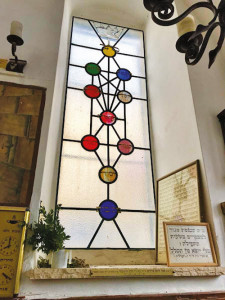
“There is nothing so organized about Tzfat sites,” said Rappeport. “The synagogues have caretakers and gabbis who are tasked by the committees with keeping up the synagogue. Most don’t know English.
“As to the hours that the sites can be visited, it’s very fluid,” Rappeport continued. “The Ari Ashkenazi and Abuhav are generally open during the daytime but if they’re hosting a bar/bat mitzvah, they close to the public. Yoseph Caro synagogue is open whenever the caretaker feels like opening it. Ari Sephardi synagogue is generally open all day but it’s a long walk to get down to the street where the synagogue is located from the main part of town. The cemetery is always accessible but, again, it’s a long walk down. The Metzuda/citadel castle is an open site. The Cave of Shem and Ever can be seen from the outside but the actual cave is only open on Shabbat.”
Licensed tour guide Adam Bodenstein of Uncover Israel Tours, who specializes in the Old City, Tzfat, the Galilee and the Golan Heights, agrees with Rappeport. “There are three other shuls [besides the Ari Ashkenazi] that travelers to Tzfat might enjoy visiting that do not have consistent opening hours, the Ari Sephardi, Alsheich and Rabbi Yosef Caro shuls.”
So what to do? You can visit Tzfat with virtual tours. There are self-guided video tours. Safed-home.com’s tours include Yosef Caro Synagogue, Ari Ashkenazi Synagogue, Ari Sephardi Synagogue, Ari Mikvah, Abuhav Synagogue, Auritch Synagogue, Cave of Shem and Ever and more.
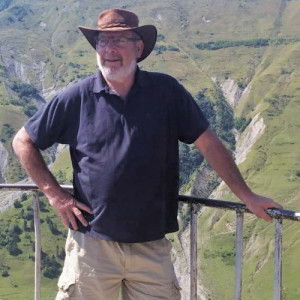
Then there is “Simtaot,” a new tourism experience in Tzfat, which aims to make the story of Tzfat accessible for everyone. Through an interactive experience, with easy access through their smartphone, visitors will be able to easily enter the site and watch a virtual tour, for free. This tour will guide them through the story of Tzfat at different periods of history, accompanied by incredible local stories.
But if you are visiting Tzfat and want to see the historic sites and shuls in person, a tour guide is the answer.
Medad Shalem is local, English-speaking, and comes highly recommended, according to Rappeport and dozens of reviews on Google Maps. Shalem has been a tour guide for over 20 years and likes to share the stories and his love of this amazing city with tourists.
Shalem described one of his tours. “On this tour we’ll meet the kabbalists of Tzfat from the 16th Century, especially the Holy Ari. We’ll go to the spot where the custom of singing Lecha Dodi started. We’ll hear the story of the surprising event that occurred in the middle of the great earthquake that destroyed the city. We’ll see houses over 500 years old that were hidden from the eyes of all for many years and the most beautiful synagogue in Tzfat, the Rabbi Isaac Abuhav Synagogue. We will also see the place where the maggid would appear to Rabbi Yosef Caro, author of the Shulchan Aruch. We will also experience a beautiful view of the Galil from one of the roofs in Tzfat’s Old City. And we will hear the story that took place at the end of the narrowest alley in Tzfat. We will hear about the miracle that occurred in Tzfat during the War of Independence when the city was liberated.” Shalem’s tours can be customized to fit the needs of groups, individuals and families.
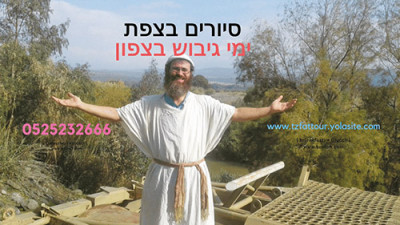
Bodenstein offers a two-hour highlight tour, where visitors discover Tzfat from top to bottom. “Through the stories of the Kabbalists,” he said, “the visitor will begin to understand the spirit of this quiet, yet spiritually energized town. From breathtaking views to the old synagogues and even a behind-the-scenes tour of recent archaeological findings from 16th Century Tzfat in the heart of the Old City, we’ll try to understand the vibe of Tzfat from its stones, buildings, stories and people.” A more in-depth, four-hour tour includes everything in his highlight tour, plus exploration of the upper area of the Old City, with a gorgeous view from the top, as well as a look underground into the heart of the mountain and an 800-year-old Mameluke cistern.
“One of the most significant figures in Jewish history was Rabbi Yitzchak Luria, also known as the Ari HaKadosh or the Arizal. There are two shuls in Tzfat named after him, the Ari Sephardi shul, the oldest shul in Tzfat, over 600 years old, and the Ari Ashkenazi shul,” Bodenstein said. “We can visit the Ari Ashkenazi shul, built after the passing of the Arizal about 400 years ago and reconstructed in the mid-1800s. This small, unassuming shul sits on the very spot, according to tradition, where the Arizal would come on Erev Shabbat with his students dressed in their finest white robes to welcome the Shabbat Queen. They would sing ‘Lecha Dodi,’ and [that] gave the Jewish people our Friday night experience as we know it in Kabbalat Shabbat.”
Bodenstein continued: “Tzfat is certainly a town with miraculous stories in every corner. Tzfat never ceases to teach me something new or to surprise me.”
Tzfat also comes alive underground. Today, much of the city has been built on the ruins of the 1837 earthquake. In 1837, Rabbi Avraham Dov of Avritch (the Bat Ayin) was in his shul davening when suddenly he screamed out to the congregation, “If you want to live, throw yourselves against the Aron Kodesh!” A moment later a massive earthquake hit Tzfat, and the shul collapsed, leaving only the Aron Kodesh. The congregants survived.

Livnot U’Lehibanot, an Israel experience program based in Tzfat, has uncovered extensive rooms, mikvahs, water cisterns and a large bakery under the ruins of Tzfat’s Old City. Aharon Botzer, executive director and founder, started the nonprofit in 1980. It has been an important component of other “Israel experience” programs, and offers “The Spiritual Tunnel Tour,” where the visitor is taken on a journey back in time to the period of “The Golden Age of Tzfat,” following the deportees from Spain who settled in Tzfat. Livnot U’Lehibanot invites individuals, families, groups, schools, students, soldiers, bar/bat mitzvah and family events, tourists—everyone—to enjoy this unique tour of Tzfat.
For more information on any of the Tzfat tours mentioned, contact Laurie Rappeport: https://www.safed-home.com, Medad Shalem: medad4@gmail.com or https://medadshalemtours.yolasite.com/safed-tour-guide.php, Adam Bodenstein: +972-50-441-5512 or Adamb22@gmail.com or http://www.uncoverisrael.net or visit https://www.youtube.com/watch?feature=player_embedded&v=IyhX_qCyjoc, Simtaot: https://www.livnot.org/simtaot-zefat-alleys/, Aharon Botzer/Livnot U’Lehibanot: https.//www.livnot.com or +972-52-429-5376, or 1-888-LIVNOT
Susan R. Eisenstein is a longtime Jewish educator, passionate about creating special, innovative activities for her students. She is also passionate about writing about Jewish topics and about Israel. She has two master’s degrees and a doctorate in education from Columbia University.
